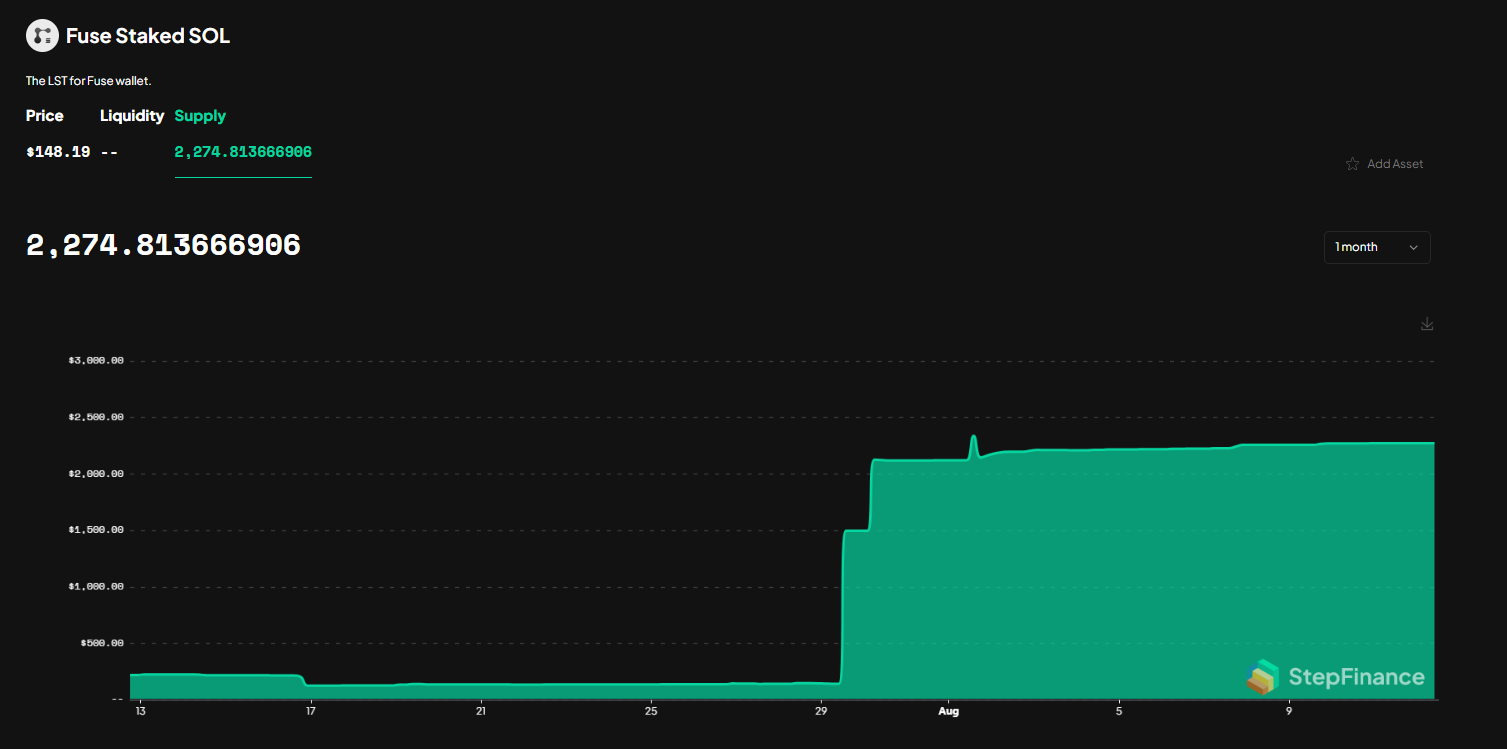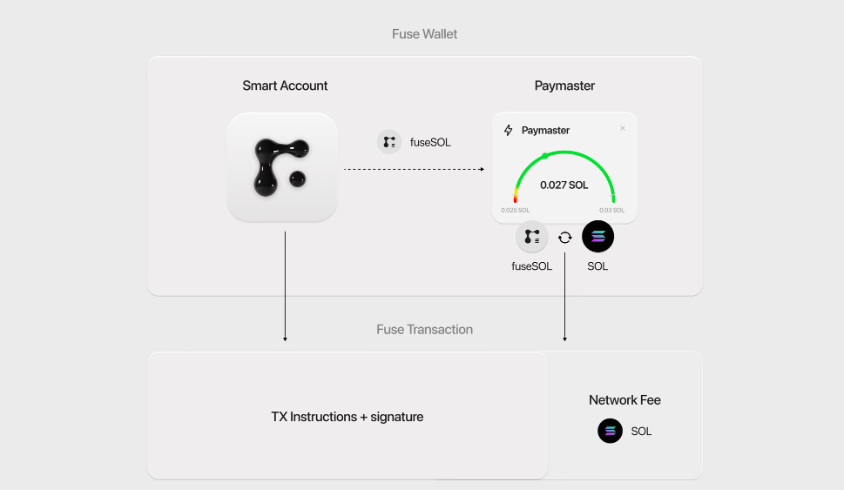Fuse Wallet Reimagines Solana Transaction Fees with Gas Abstraction
Paying transaction fees using any SPL token might soon be a reality with Fuse Wallet.
Aiming to streamline and simplify the Solana user experience, Fuse Wallet has unveiled yet another creative tool. After delivering Solana’s leading multisig solution and developing a seed phraseless smart wallet, Fuse is finally bringing gas abstraction to Solana.
What is gas abstraction, and how does it facilitate simplified applications on the Solana blockchain?
How Does Gas Abstraction Work?
In an eagerly awaited update, Fuse Wallet has finally implemented gas abstraction. A helpful onboarding tool, gas abstraction makes Solana gas payments simpler than ever before by expanding the ways in which users can pay transaction fees.
Through the platform’s Paymaster feature, Fuse Wallet’s native LST (Liquid Staking Token), fuseSOL can be automatically converted to SOL to pay transaction fees. This gives users greater flexibility by enabling them to deploy all their SOL throughout the ecosystem while still enjoying the staking rewards provided by fuseSOL.
Essentially, Fuse Wallet’s Paymaster feature ensures that your wallet always maintains a minimum balance of fuseSOL that is sufficient to pay transaction fees. Kept separate from your main balance, the Paymaster also allows for a daily spending limit of 0.1 SOL.
While for now, this might sound as simple as using fuseSOL for transaction fees instead of SOL, the future implications allow for a far more diversified onchain landscape.
Why is This Helpful?
In the future, Fuse Wallet expects that users will be able to pay gas fees using any supported cryptocurrency, like USDC. Successful implementation of gas abstraction means that users are no longer required to hold SOL in their wallets, enabling them to explore the Solana ecosystem with greater freedom and simplicity.
Additionally, gas abstraction will make it possible for applications to cover the costs of network transaction fees on behalf of their users. This feature eliminates a massive friction point that hampers adoption and helps new users join the onchain economy.
Commentators on social media have lauded the move as a bold step forward for crypto onboarding.
After enjoying a spike of interest upon its official launch on August 1st, fuseSOL, the smart wallet’s native LST, has somewhat plateaued.

According to Step Finance data, fuseSOL’s circulating supply currently sits at 2,724. However, with unique offerings like gas abstraction and Solana’s first smart wallet gaining traction in the ecosystem, it is expected that fuseSOL will witness increased adoption in the future.
Read More on SolanaFloor
What are the Solana-based alternatives to WBTC?
Future of Solana's WBTC in Doubt Following BitGO, Justin Sun Controversy
Need a Primer on Crypto Wallets?
[https://www.youtube.com/watch?v=59YzY4raDpo]



